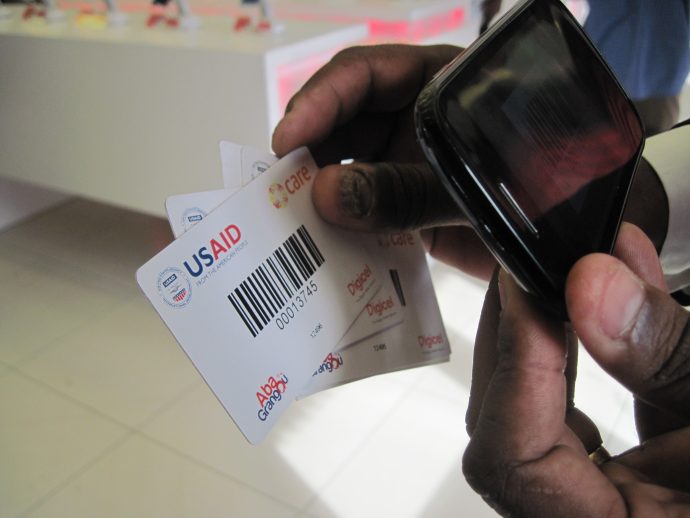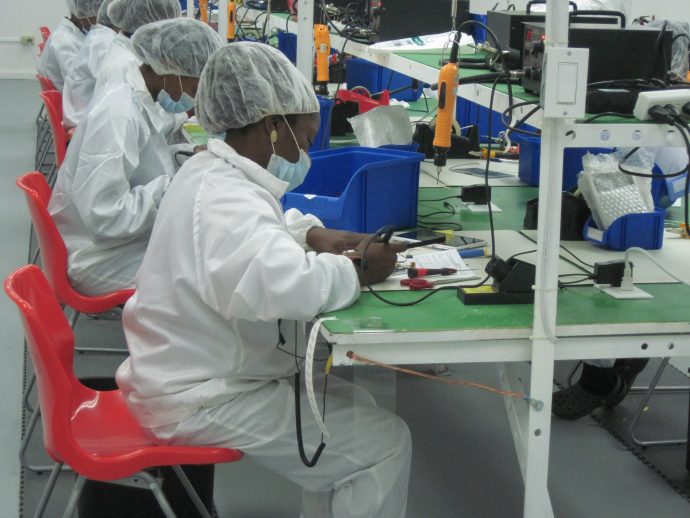Digital Health: Moving from Silos to Systems

Editor's Note: The following blog provides information about a federal partner's digital efforts. Throughout the year we will share information from other federal HIV programs.
From health officers conducting contact tracing with mobile phones in Ebola-affected countries to TB patients using apps to fulfill their treatment regimen, digital technology is playing an increasingly central role in global health.
In fact, over the past decade, the use of mobile and web-based technologies to improve health has grown significantly — not only in developed countries but in emerging economies as well.
The field of digital health, as it is now known, has seen an uptake in financial investments and the projects launched around the world, according to a recent studyExit Disclaimer by Health Data Collaborative Exit Disclaimer. Strong health systems are built around reliable data. As such, digital technologies are becoming an integral component of efforts to achieve and measure progress toward ensuring people have access to affordable and quality health care, a principle enshrined in the United Nations Sustainable Development Goals Exit Disclaimer.

In our time leading the USAID Global Development Lab and Global Health Bureau, respectively, we have witnessed key transformations in the way USAID invests in and uses digital technologies to improve global health programming and outcomes. The Agency is moving away from business as usual and supporting game-changing initiatives like the Rumor Tracker, a two-way, mobile phone communications system that can facilitate the exchange of real-time data between Ministries of Health and frontline health workers.
The good news is that we are institutionalizing the best of what we have learned through years of project implementation, as captured in the Principles for Digital Development Exit Disclaimer. In the past, digital health funding flows were driven by projects and programs in silos. We are gradually moving away from this, so we can make better-coordinated and aligned investments in scalable, sustainable and interoperable digital systems. Interoperability describes the extent to which systems and devices can exchange data and interpret shared information.

This past April, during a workshop organized by USAID, Dr. Sas Kargbo, director of the Department of Policy, Planning and Information at Sierra Leone’s health ministry spoke about his country’s experience in dealing with fragmented information during the Ebola crisis and how that impeded the ministry’s ability to have an accurate and reliable picture of what exactly was happening on the ground. His vision, he underscored, is to have an integrated health information system, down to the community level, to improve the coverage, quality and reporting of service delivery. His vision is our vision.
Many promising open source technologies are showing the potential to scale in a sustainable manner, enabling country governments to manage the use of the technology over the long term. Yet these tools often suffer from a lack of core funding as they are largely driven by disease-specific problems whose interests lie only in finding disease-specific solutions.
This is why in September of this year, the Lab and Global Health Bureau created a new funding mechanism that will bring funds together across disease-driven platforms to break down silos in health programming. Our new digital health mechanism will dedicate a portion of its funds to financing some of these most promising tools and help them transition to sustainable business models.

Our bet is that by better aligning digital health investments and increasing adherence to best practice for digital health tools, we can accelerate global health outcomes and ultimately save more lives. As these digital systems grow, we expect to see a flourishing of best practice examples driven by an increased demand for data for decision-making at all levels of the health system, from central health ministries to remote health worker posts.
But here is a word of caution. Experience has taught us that the effective use of digital technologies relies not just on connectivity, software and devices, but also on the capacity of individuals and institutions. This means that training is as important as hardware.
This lesson must permeate all of our future investments. Training will be a central activity of our new digital health funding mechanism as it supports digital health implementations in specific countries.

Our vision for the future builds on these lessons to optimize our investments and increase global health returns. At the end of the day, we are accountable to two audiences: American taxpayers who are committed to ending extreme poverty and building resilient and democratic societies, and people in developing countries who measure returns in the number of lives saved.
About The Author:
Ann Mei Chang, Chief Innovation Officer & Executive Director at The Global Development Lab, and Jennifer Adams, Acting Assistant Administrator, Bureau for Global Health
Related Links:
- Find out how Nigeria is using health data to track performance Exit Disclaimer
- Learn about mHealth, the provision of health services and information via mobile and wireless services through the Digital Health Network Exit Disclaimer.
- Check out the mHealth database Exit Disclaimer with 6 mHealth documents intended to strengthen USAID’s mHealth programs in Africa.
- Learn how USAID partners with telecom companiesExit Disclaimer to boost health impact in Africa